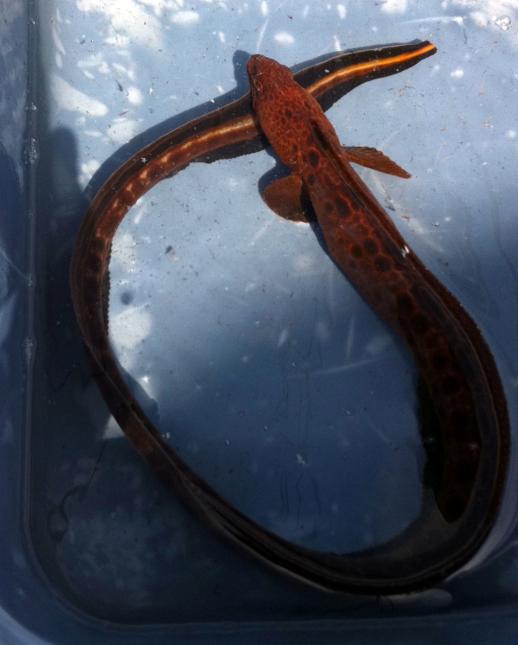Rarely caught incidentally in the commercial fishery off the Washington coast with otter-trawls.
Description and Range
Physical description
A long eel-like fish (but not a ‘true’ eel) with a large, square head and stout canine teeth at the front of the mouth. The body is mostly gray to brown and sometimes greenish. Color dominance tends to vary between male and female wolf eel with, the females being brown and the males being dominantly grey. It has dark round spots with pale rings along the body and fins. Larger wolf eels tend to be more mottled. This species lacks pelvic fins and has no lateral line. Its dorsal fin is long and has flexible spines and no soft rays. This species has up to 233 soft anal fin rays. Young wolf eel are often orangish with dark areas merging into stripes at the rear of the body.
Wolf can grow up to 240 cm (7.87 ft) in length, and 18.4 kg (40.5 lbs) in weight. The maximum lifespan of a wolf eel is not known. Age at maturity occurs at 4 to 7 years, suggesting these may be long-lived fish.
Geographic range
This species ranges from the Seas of Okhotsk and Japan to the Krenitzen Islands, in the Aleutian chain, and to Imperial Beach, southern California. Adults live on the bottom, usually among rocks in subtidal areas. They often occupy only one den, unless they are driven out by a larger wolf eel or a large octopus. They have been found at depths up to 226 m (740 ft).
Regulations
Rules and seasons
Recreational harvest within Puget Sound is closed.
